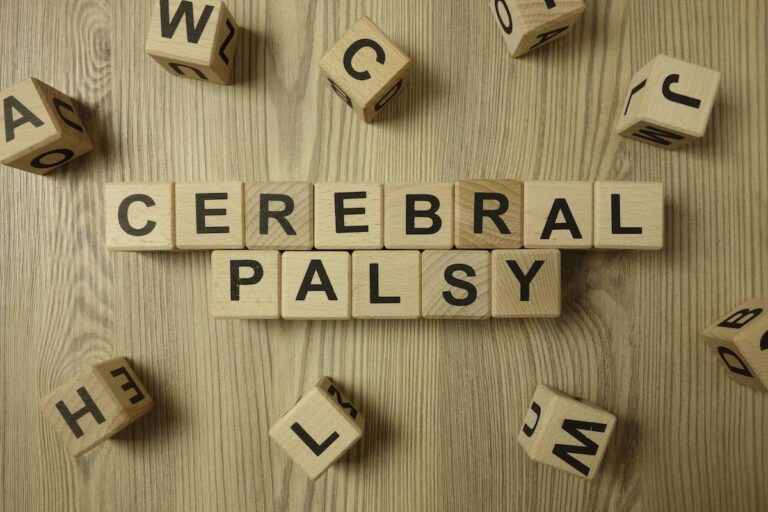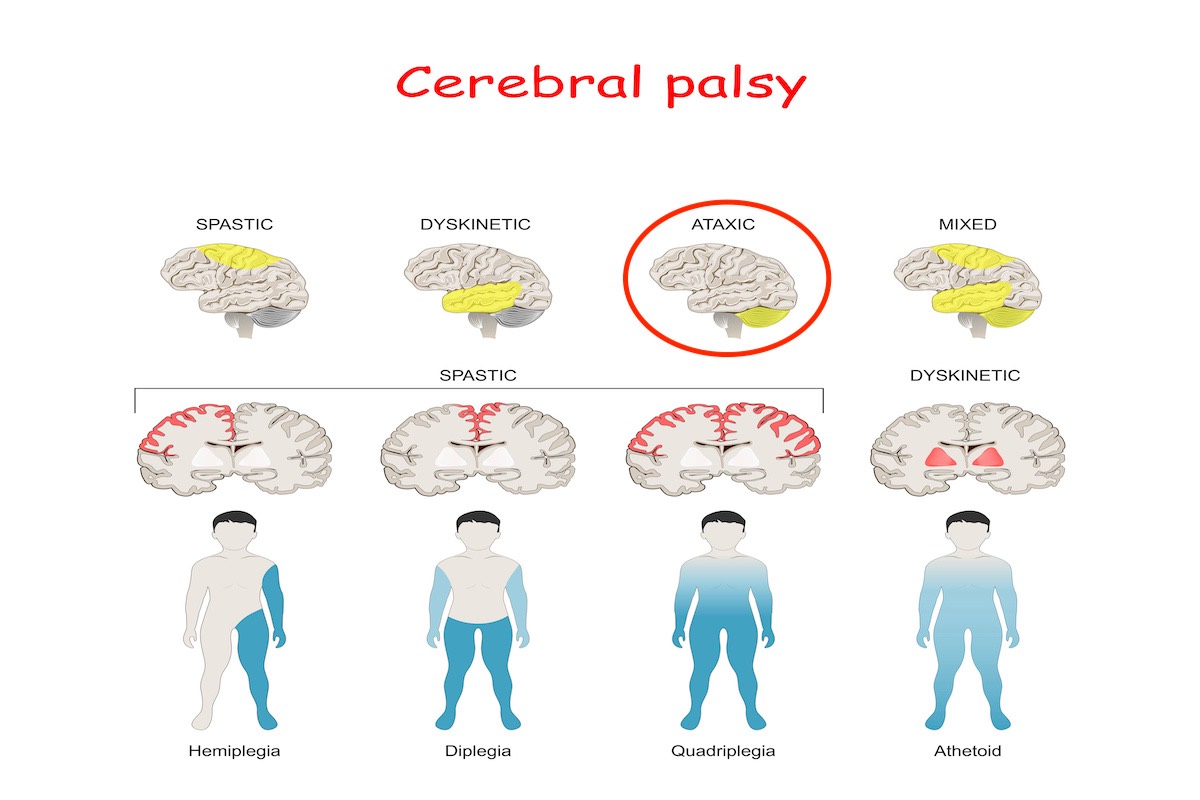
Call 24/7 for a FREE case evaluation
Call now (866) 393-4334

$100,000,000
in California case results
$20,000,000
in California jury verdicts
14
award-winning attorneys in network

Ataxic cerebral palsy is a type of cerebral palsy that affects a person’s balance, coordination, and depth perception. The definition of, Ataxia, means “incoordination” or being “without order.”
This type cerebral palsy is the least diagnosed type. Research and studies suggests that only about 5 -10% of people who have cerebral palsy have this kind.
People who have this type of cerebral palsy have suffered damage to the cerebellum. The cerebellum modifies motor commands initiated by descending pathways in the brain, ensuring that movements are accurate and adaptive. The cerebellum is responsible for a variety of functions:
The way that ataxic cerebral palsy affects a person’s balance, coordination and depth perception manifests itself in several ways. These ways include unsteady walk, difficulty performing tasks requiring fine motor skills and uncontrollable shaking during deliberate actions, such as reaching for an object.
Movements of people with ataxic cerebral palsy is often jerky or erratic. These movements may seem clumsy, imprecise or unstable. The muscles of people with ataxic cerebral palsy are often weak and usually interferes with muscle control in the legs and arms.
This interference affects coordination and balance and can also affect a person’s hands and fingers. Parts of the face, head and throat can also be affected by ataxic cerebral palsy, causing people who have this condition to experience difficulty moving their eyes where they want, swallowing and speaking.
Children who have ataxic cerebral palsy usually walk unsteadily with their feet wide apart. This gait may actually help children who have ataxic cerebral palsy keep their balance. Balance problems are usually most pronounced when people with ataxic cerebral palsy are walking.
Quick and precise movements, such as fastening buttons, tying shoelaces, or writing a sentence, may be especially challenging for children who have ataxic cerebral palsy. Children may also struggle to control the movements of their hands and arms when performing voluntary actions such as reaching for a toy or a piece of food.
Some people who have ataxic cerebral palsy exhibit erratic speech, most display good communication skills however. Every case is different and there are some cases of those with ataxic cerebral palsy having learning difficulties, most people who have ataxic cerebral palsy have normal levels of intelligence.
Although these symptoms never disappear, they may improve over time with the aid of various treatments. Although certain symptoms are common, specific symptoms and their severity vary from person to person.
Although children do develop at different rates, parents should closely monitor the rate at which their children meet milestones. A child who moves, sits, and masters’ other basic skills more slowly than expected might have ataxic cerebral palsy or another type of cerebral palsy.
Ataxic cerebral palsy is usually diagnosed by doctors up to age 4. Because ataxic cerebral palsy is a complex disability, obtaining a definitive diagnosis before a child is 12 months old can be difficult.
Ataxic cerebral palsy is permanent, but there are many different types of therapy for cerebral palsy that can help enhance the lives of people who live with this condition.
Physical therapy is a cornerstone of all cerebral palsy treatment, including treatment for ataxic cerebral palsy, according to the National Institute of Neurological Disorders and Stroke. Patients usually begin physical therapy in their first few years of life or shortly after diagnosis.
Through resistance and strength-training exercises, people who have ataxic cerebral palsy can improve their balance, motor skills and muscle strength. Physical therapy can also help prevent contractures. Orthotic devices may be used to complement physical therapy.
Occupational therapy can aid development of an ataxic cerebral palsy patient’s small muscles and postural tone. This type of therapy teaches participants daily living skills, such as eating, dressing and bathing. Patients can also learn techniques that can help make some tasks easier, such as writing and scissors use. Splints may also be used during occupational therapy to make people who have ataxic cerebral palsy more independent.
People who have ataxic cerebral palsy may have mild speech problems. These problems can often be corrected or improved by working with a speech therapist.
Muscle relaxants and anti-anxiety drugs such as Valium can ease the tremors associated with ataxic cerebral palsy. Further medications may also be used to treat other conditions that accompany ataxic cerebral palsy, such as epilepsy or incontinence.
Stem cell transplants can also help people who have ataxic cerebral palsy, according to the NeuroGen Brain and Spine Institute. This organization has observed a number of improvements in ataxic cerebral palsy patients who undergo this treatment:
Understanding more about ataxic cerebral palsy, its symptoms, and its treatments is important for anyone who knows or cares for someone who has this type of cerebral palsy.
WE’RE OPEN NOW
Our staff are standing by to help you find the perfect attorney for your case.
